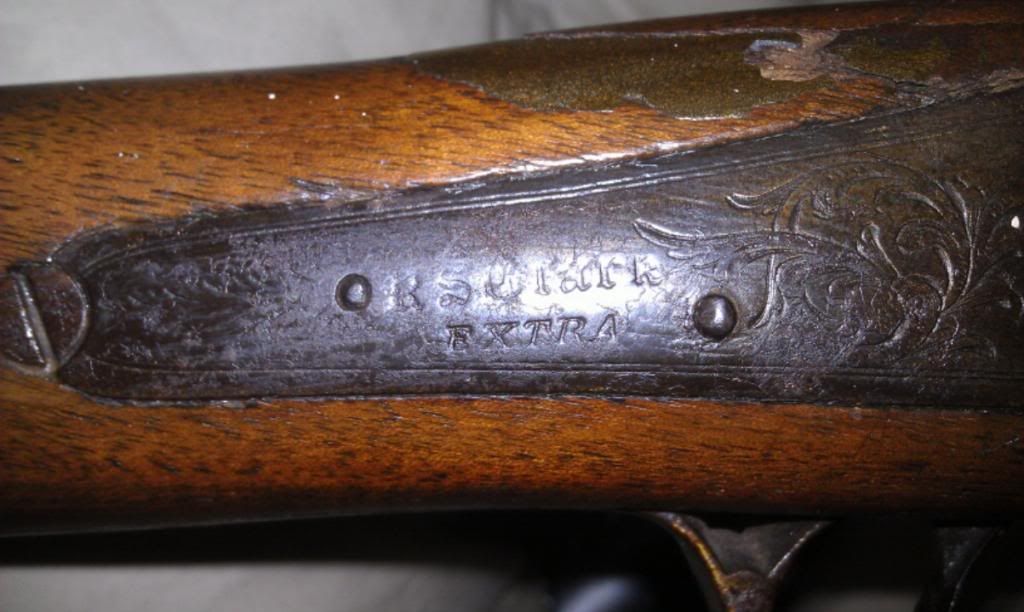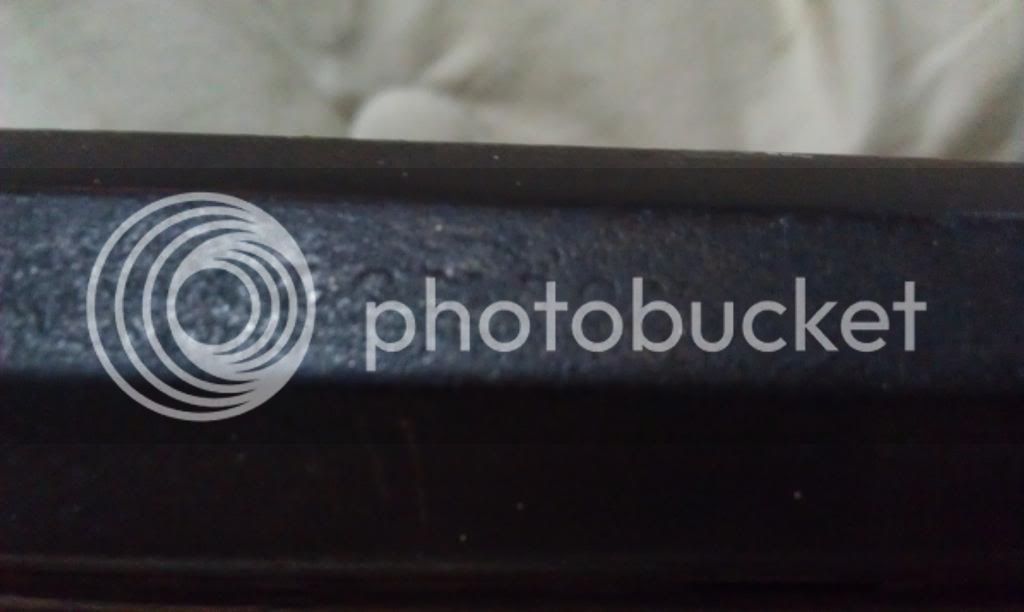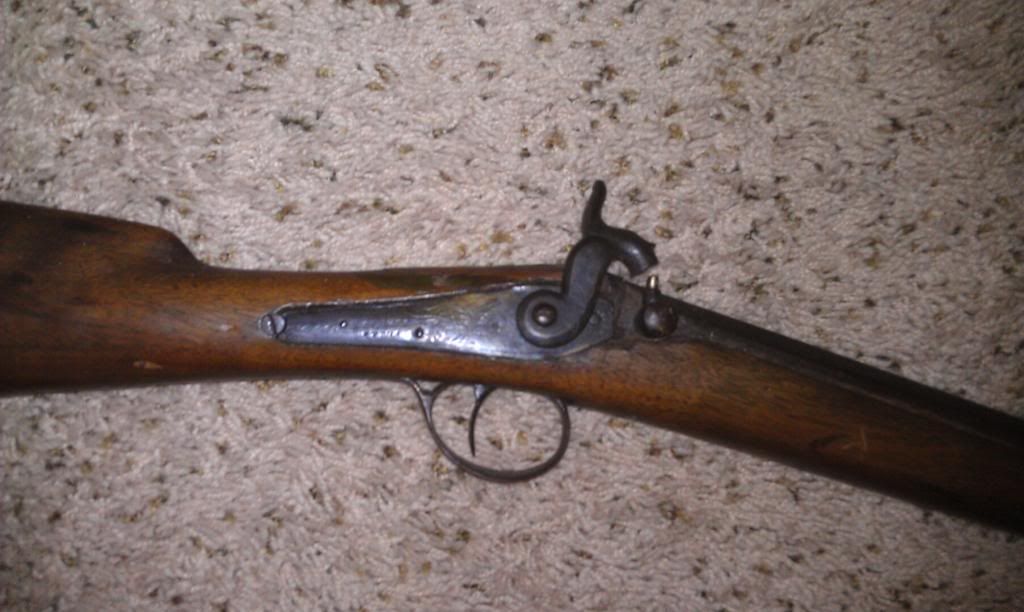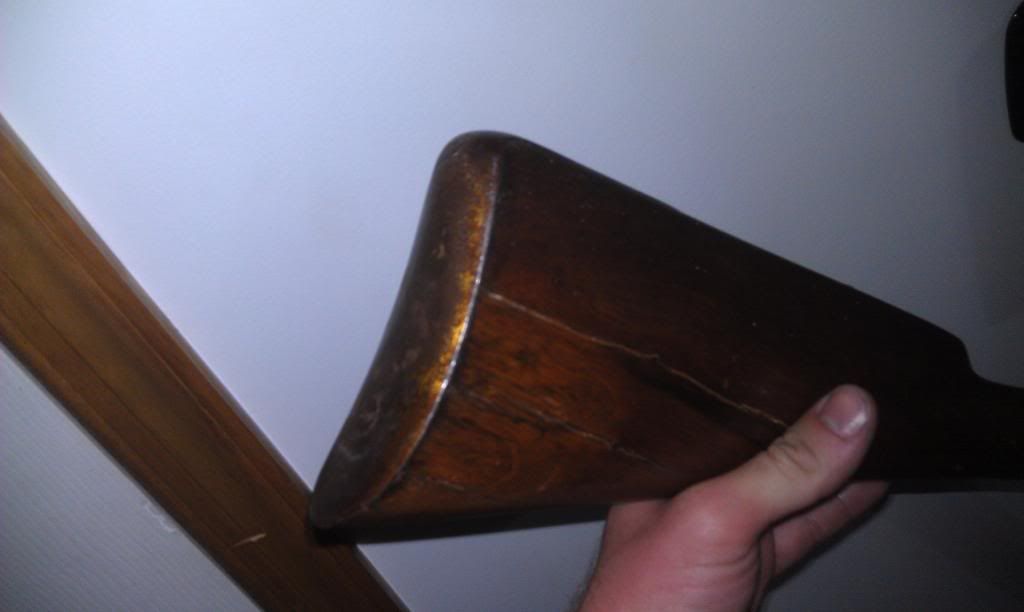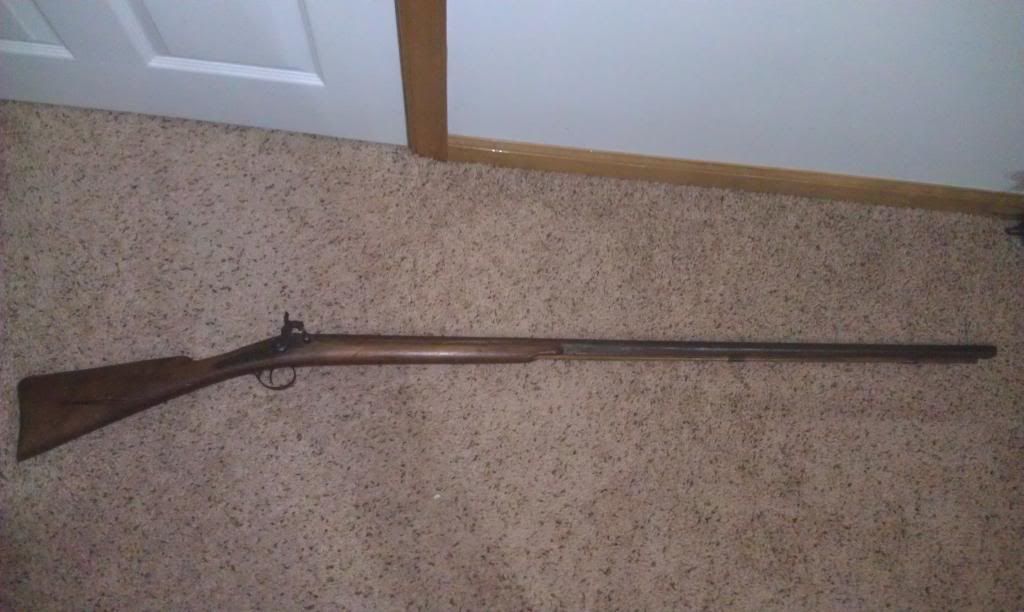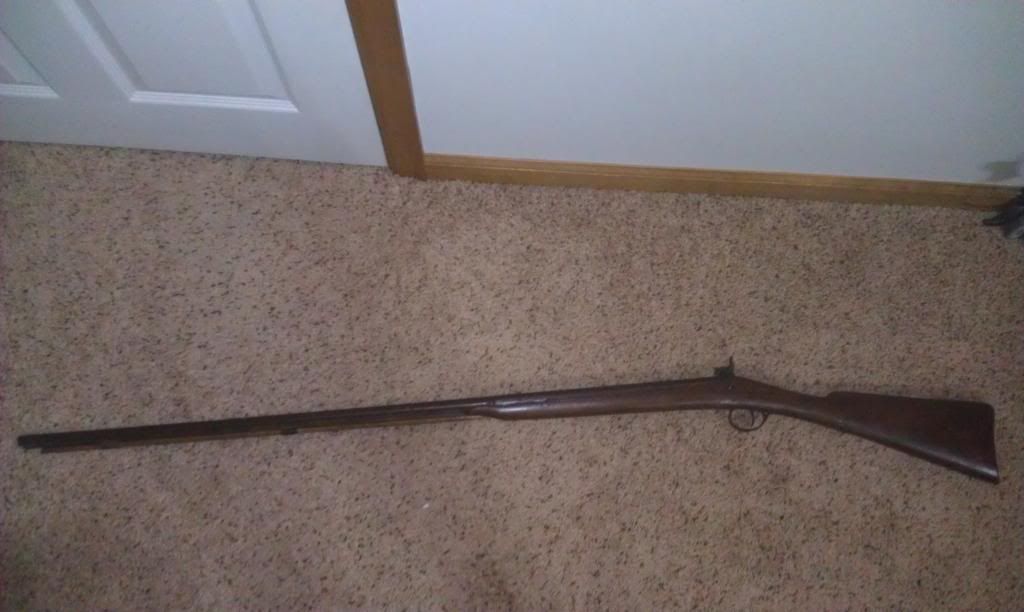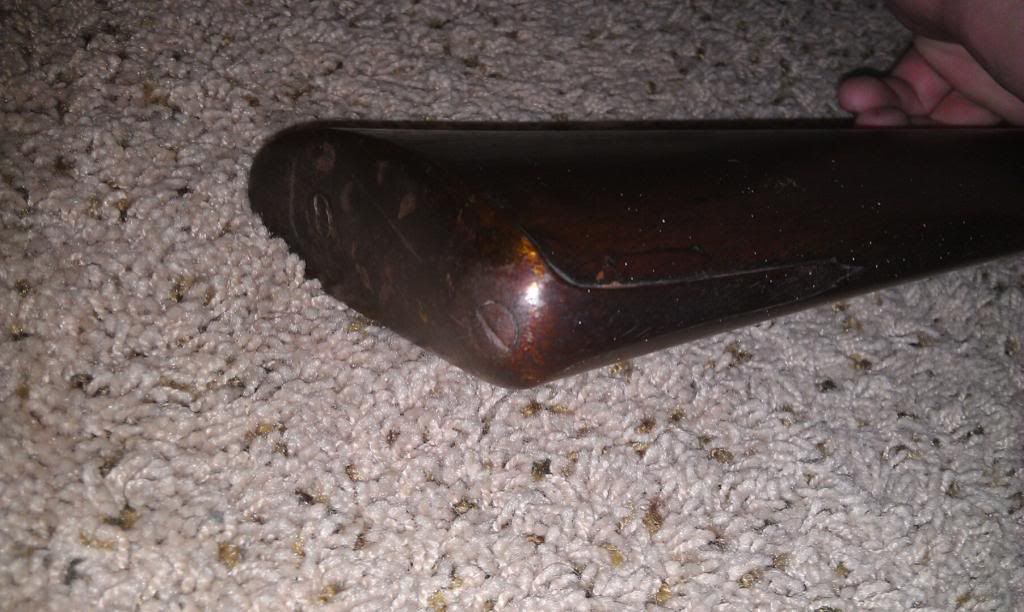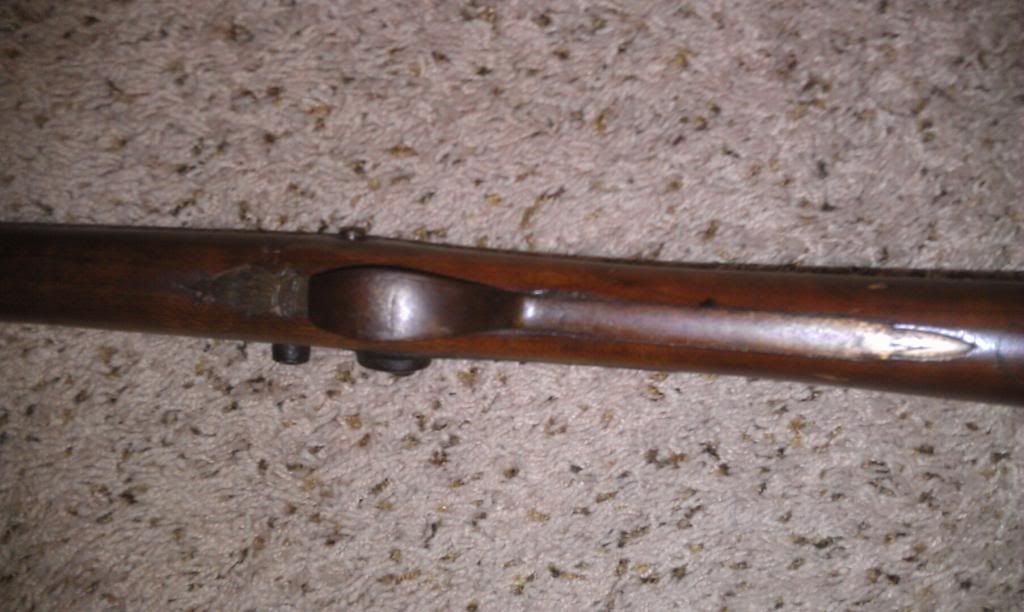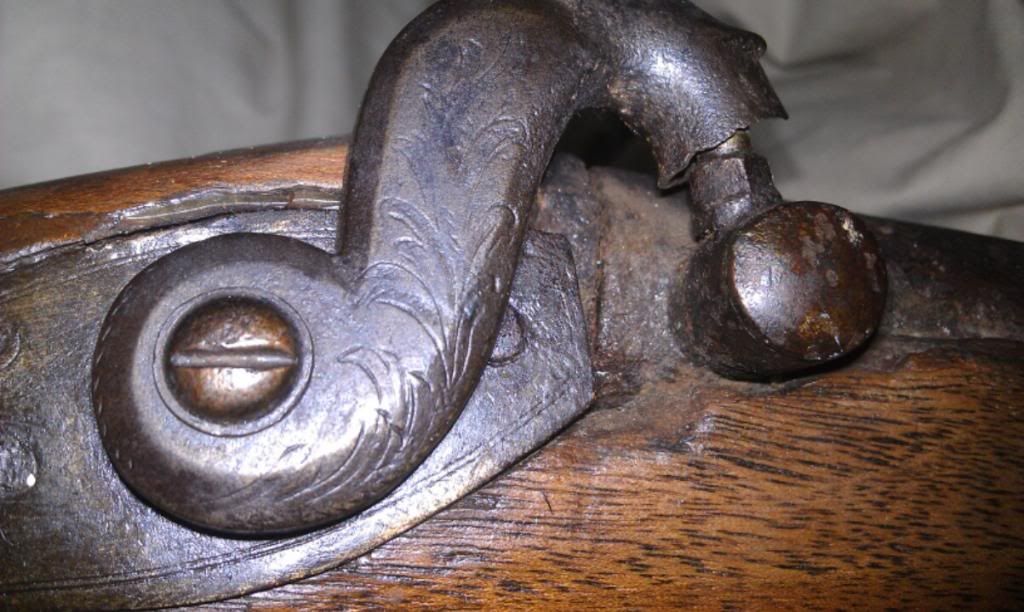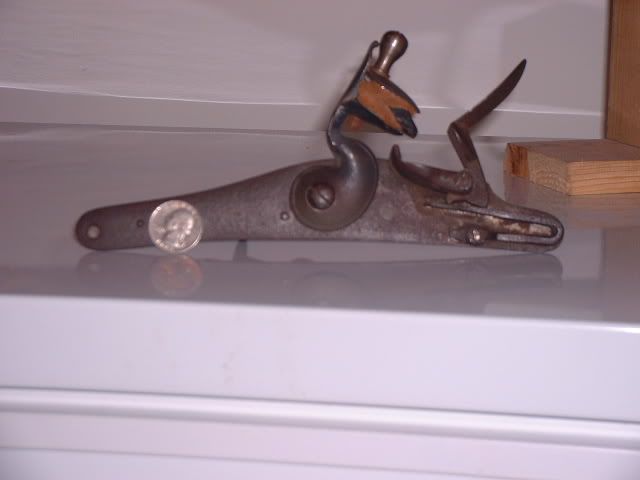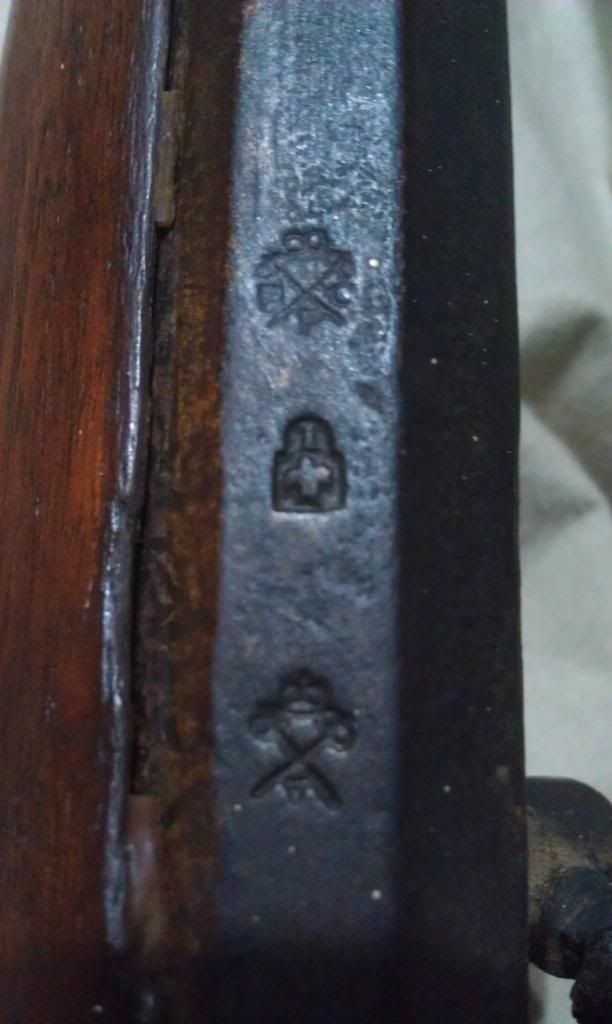
I got this rifle and I have no clue what it is, I was trying to look at all the markings and tell manufacturer, date, etc. I found the top and bottom markings on different websites, seems to be a birmingham proof and birmingham view, 1813-1904. But as for the middle one... I cant find it anywhere. Anyone have any clue?





